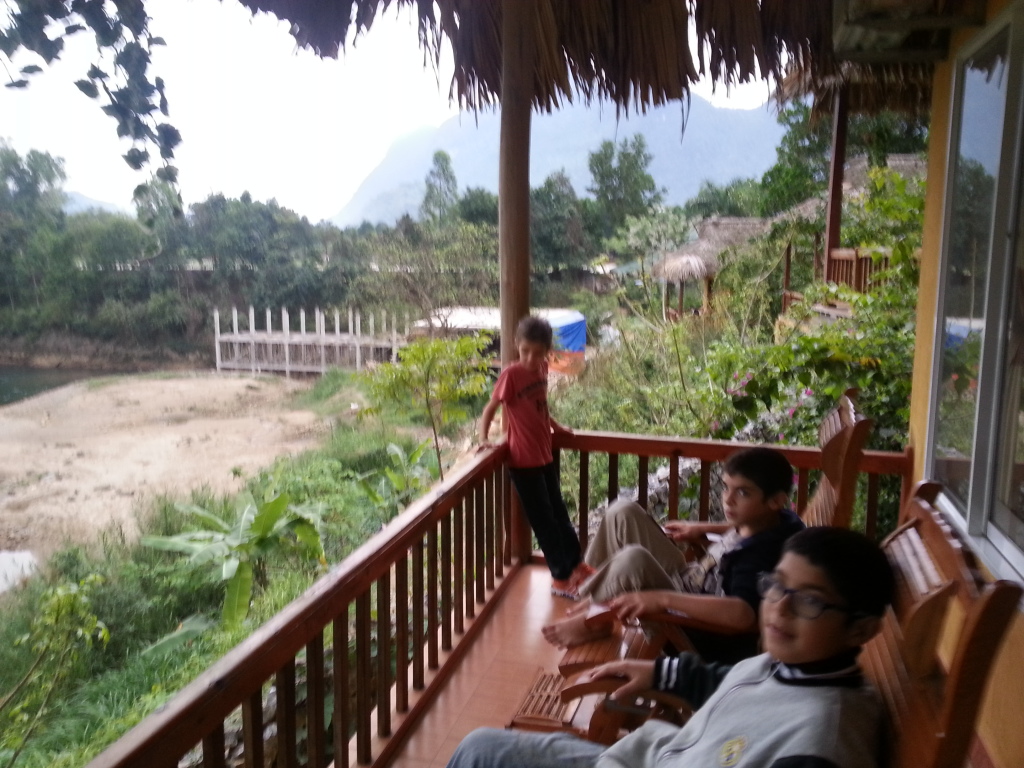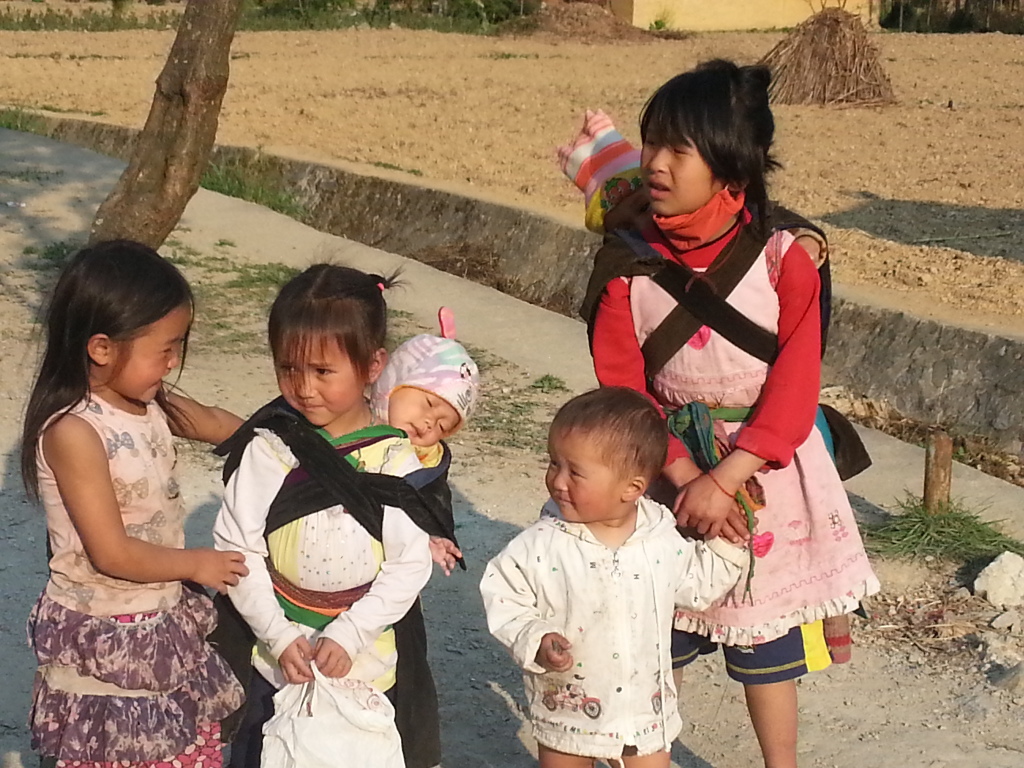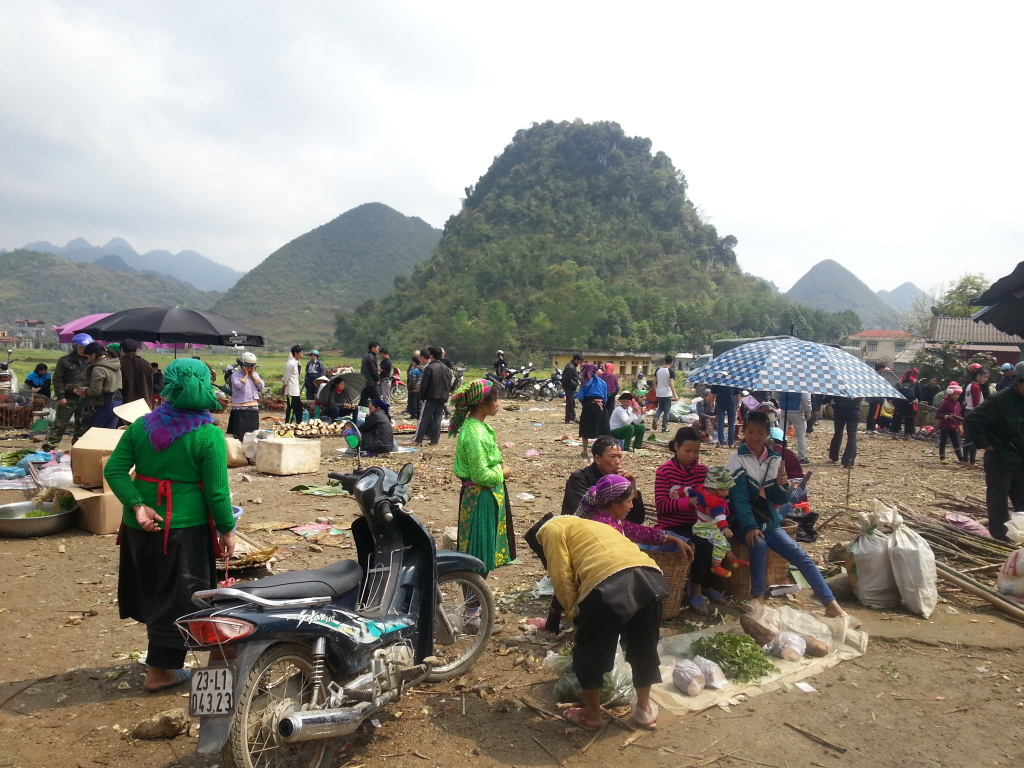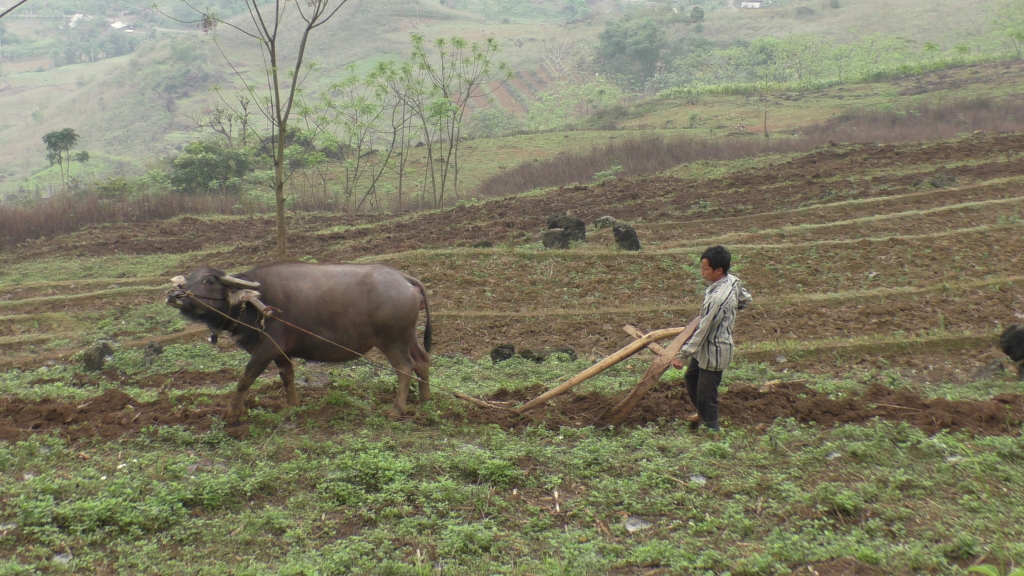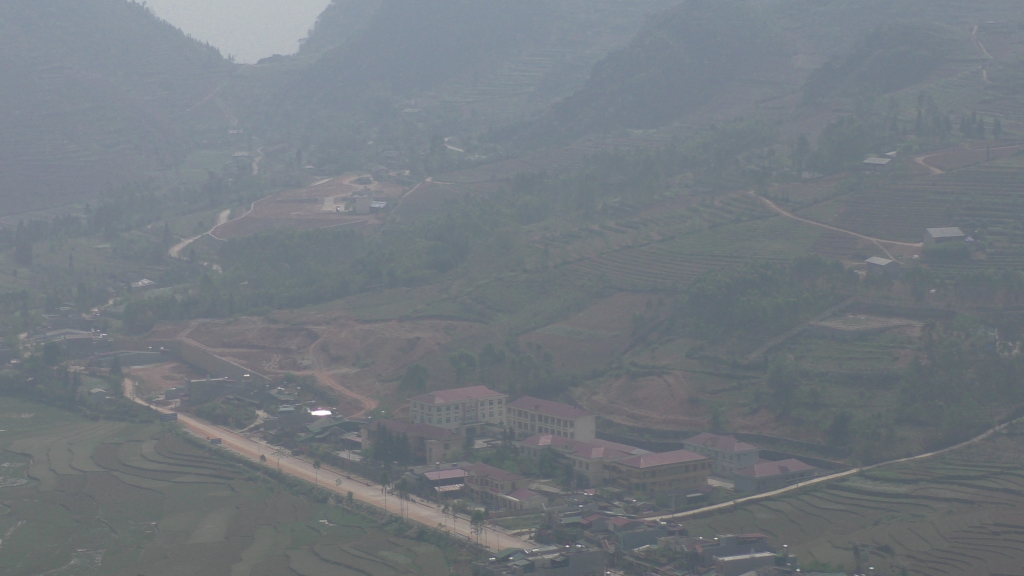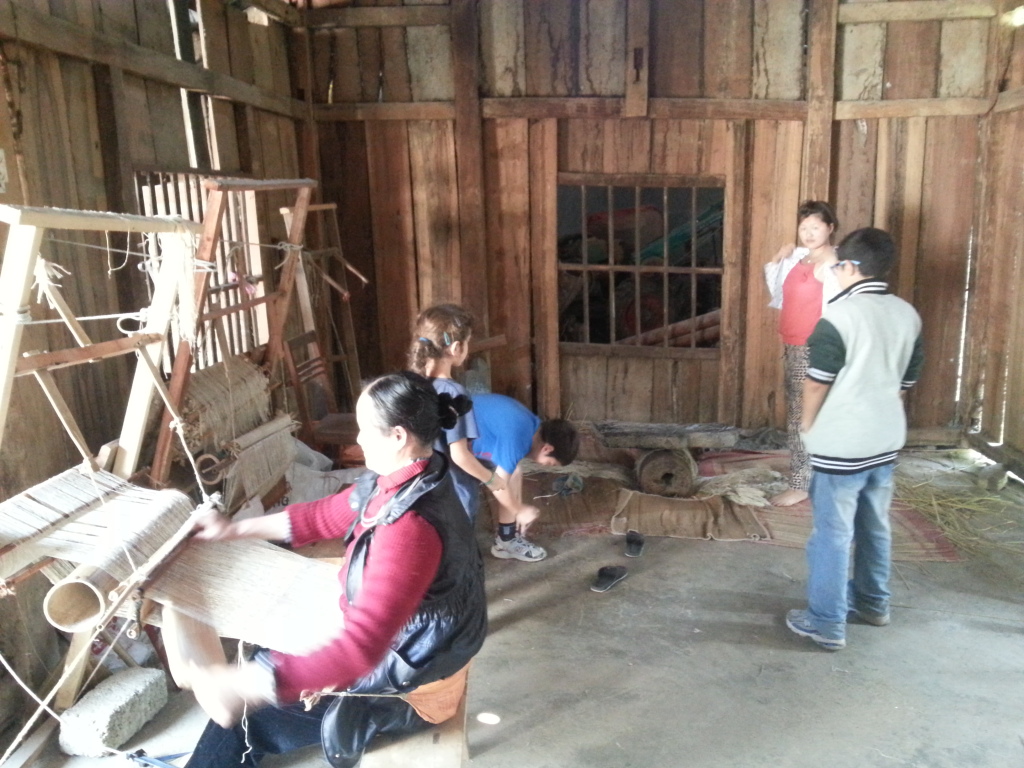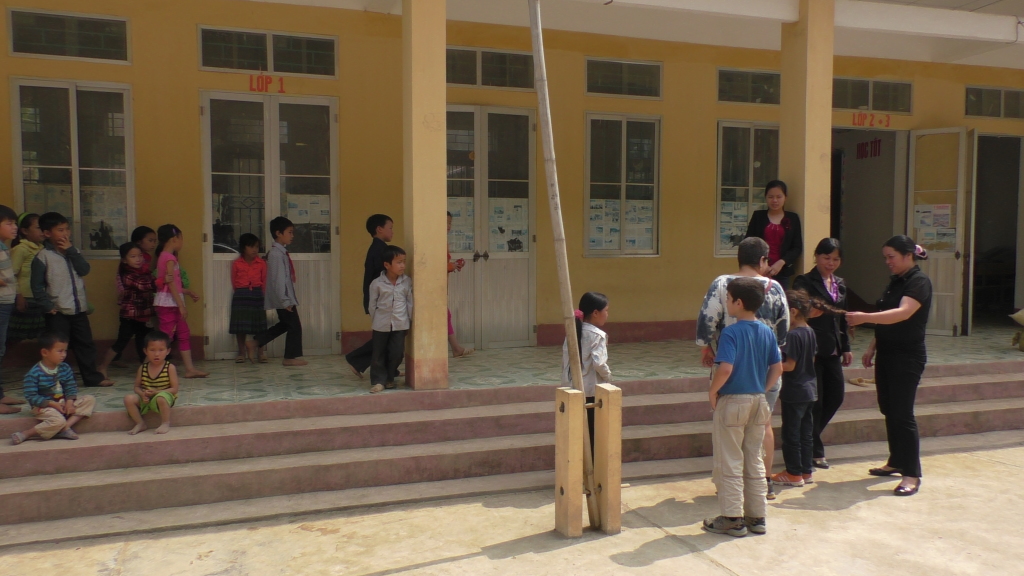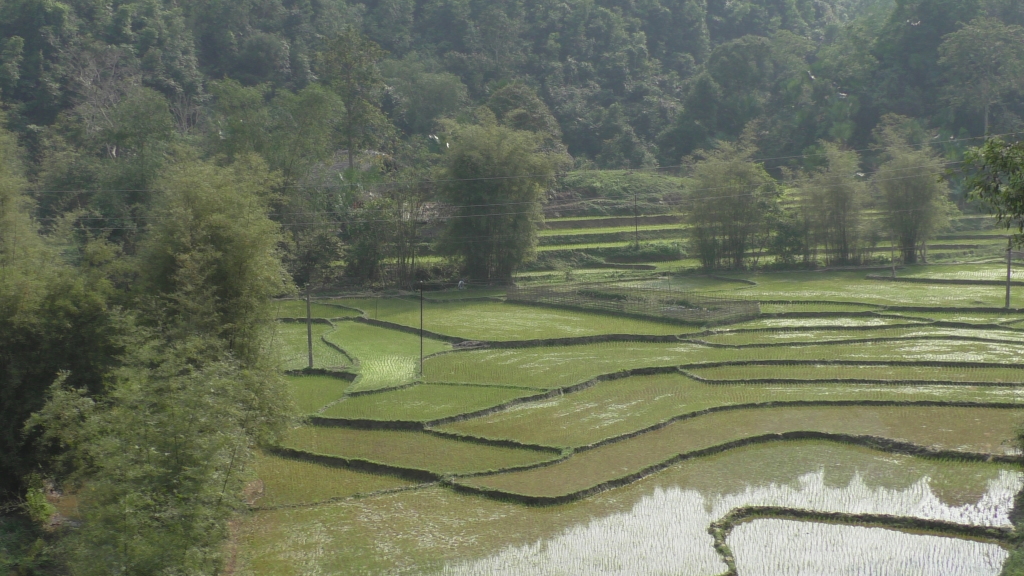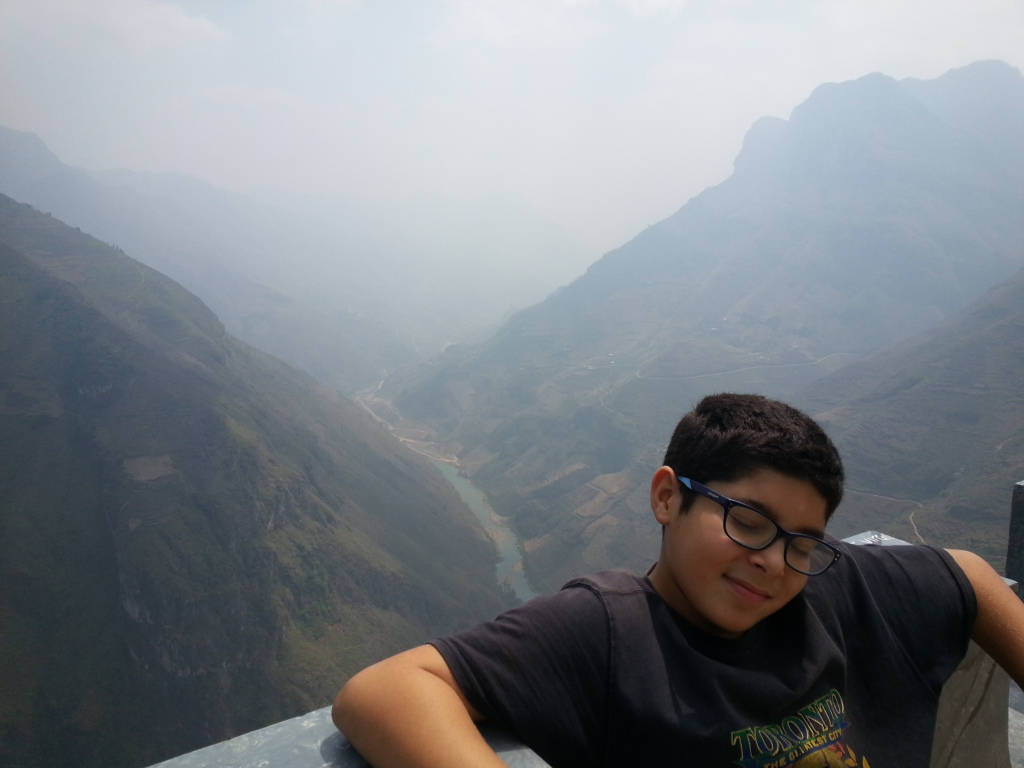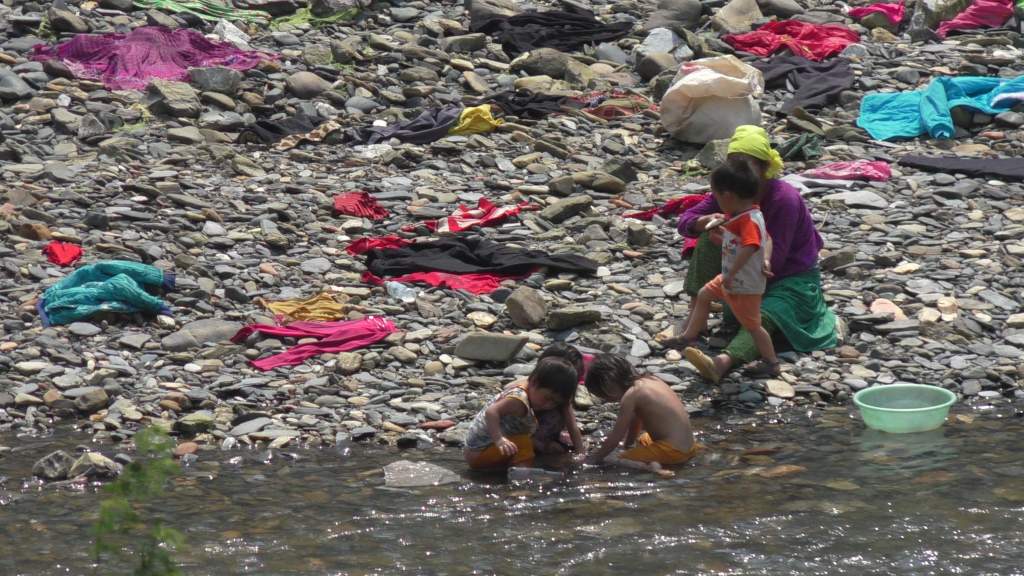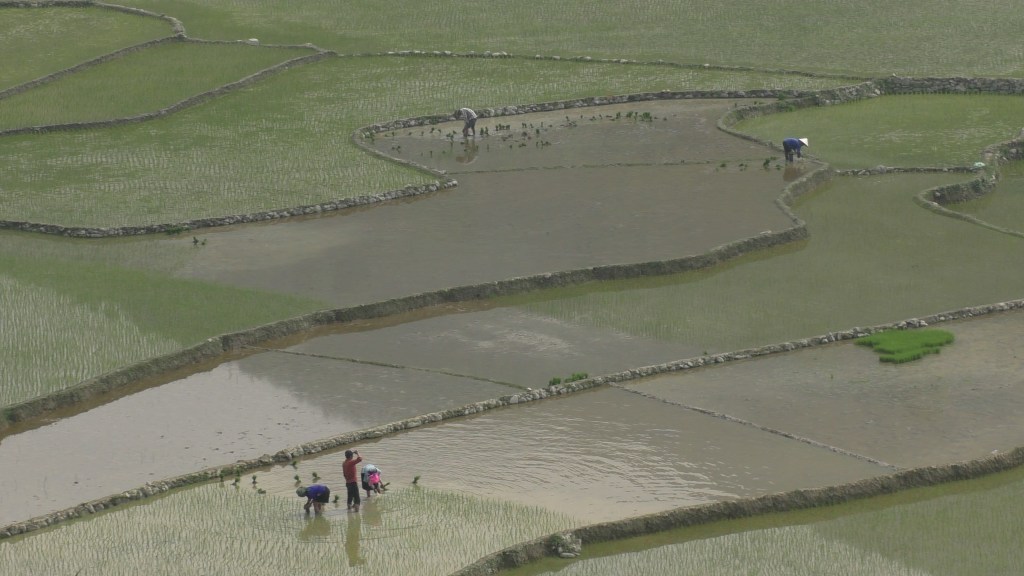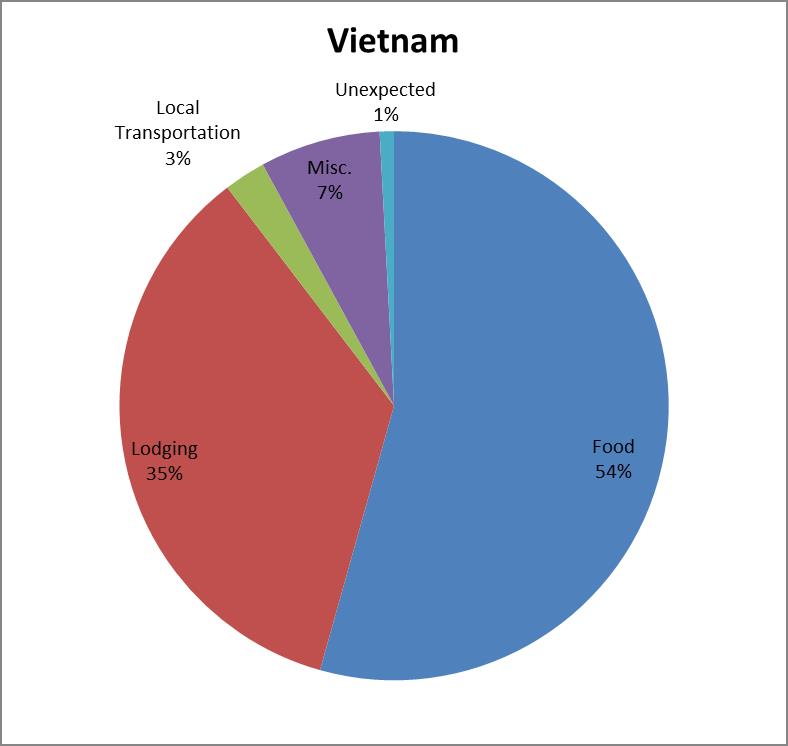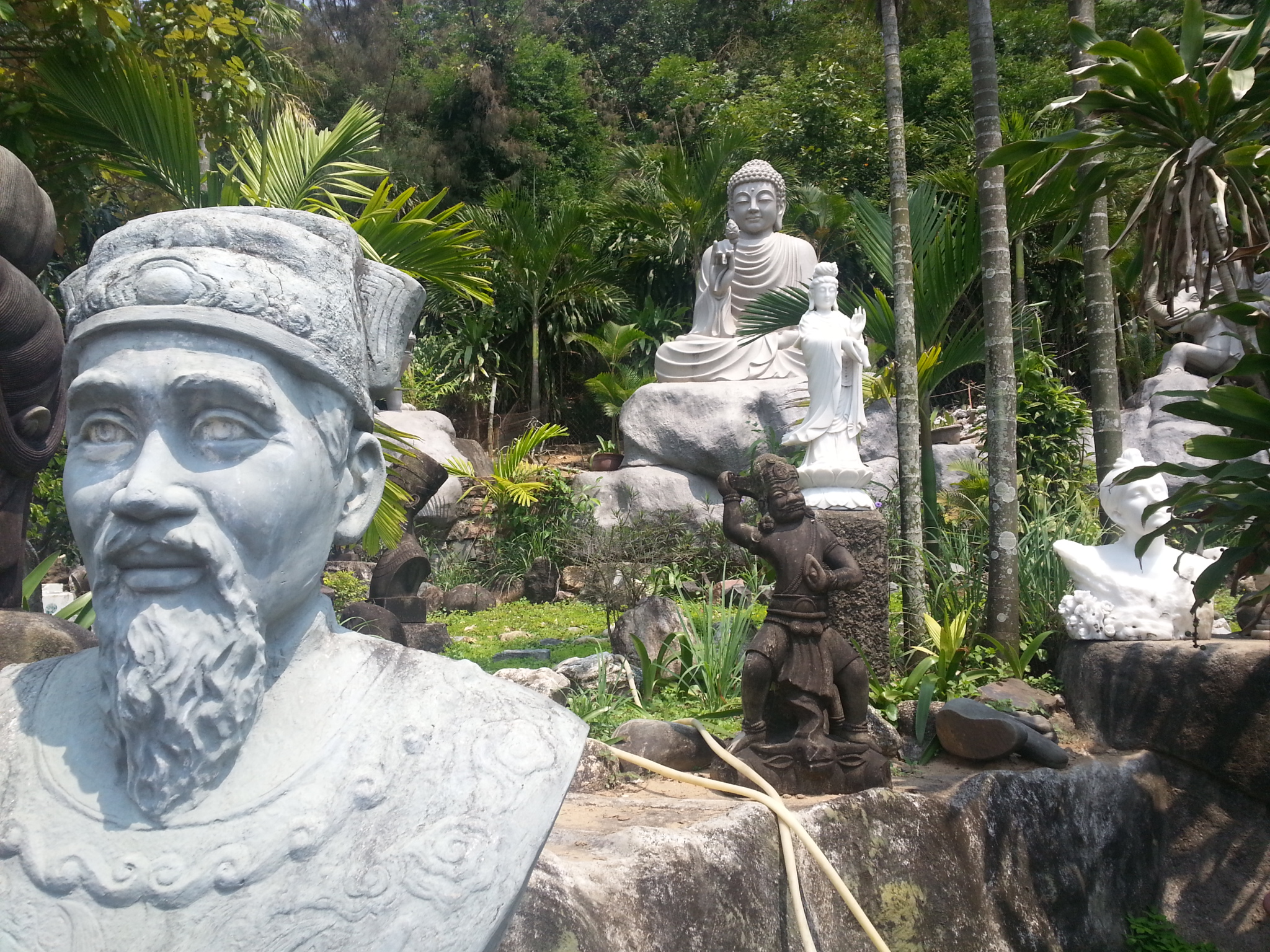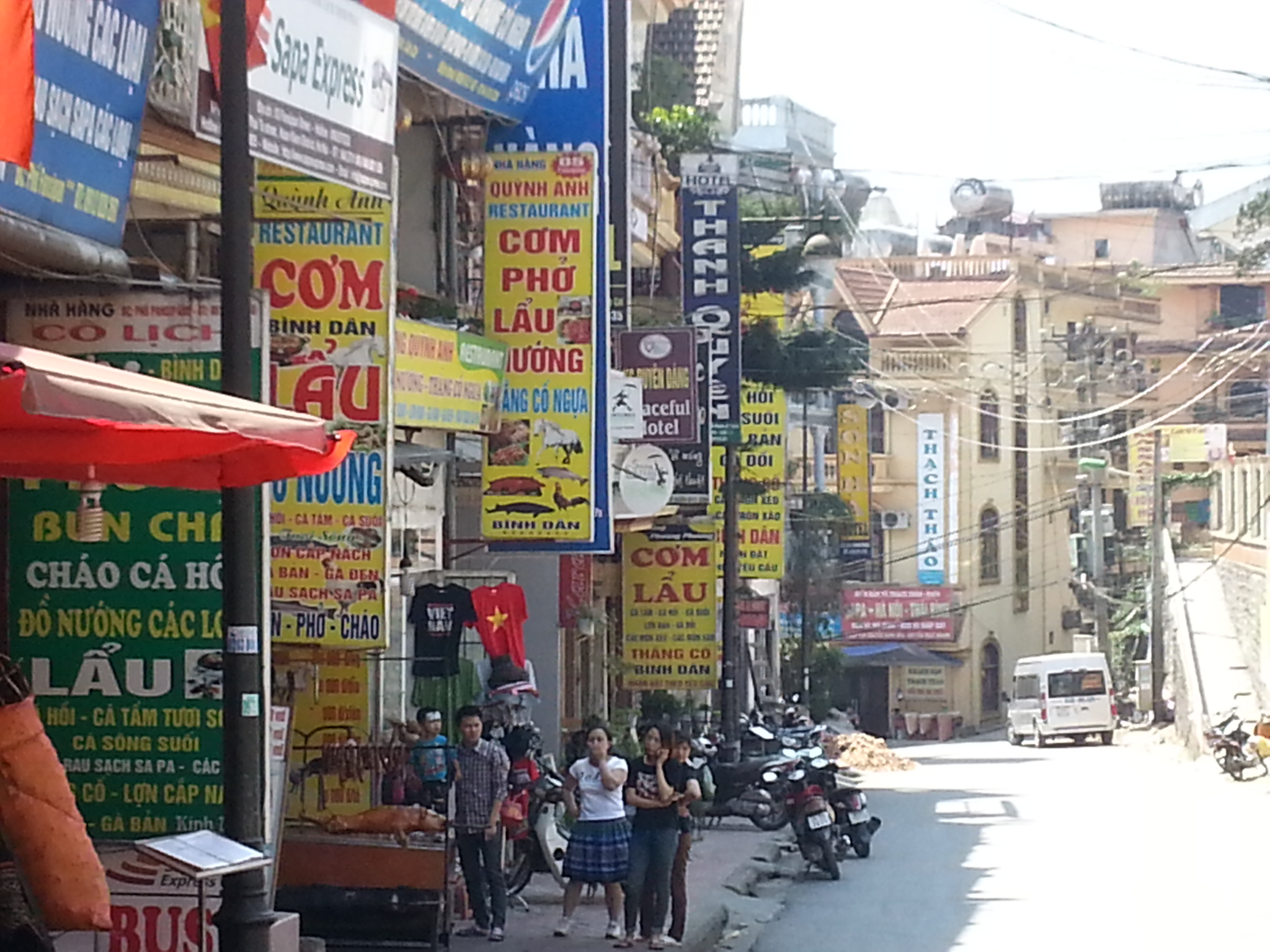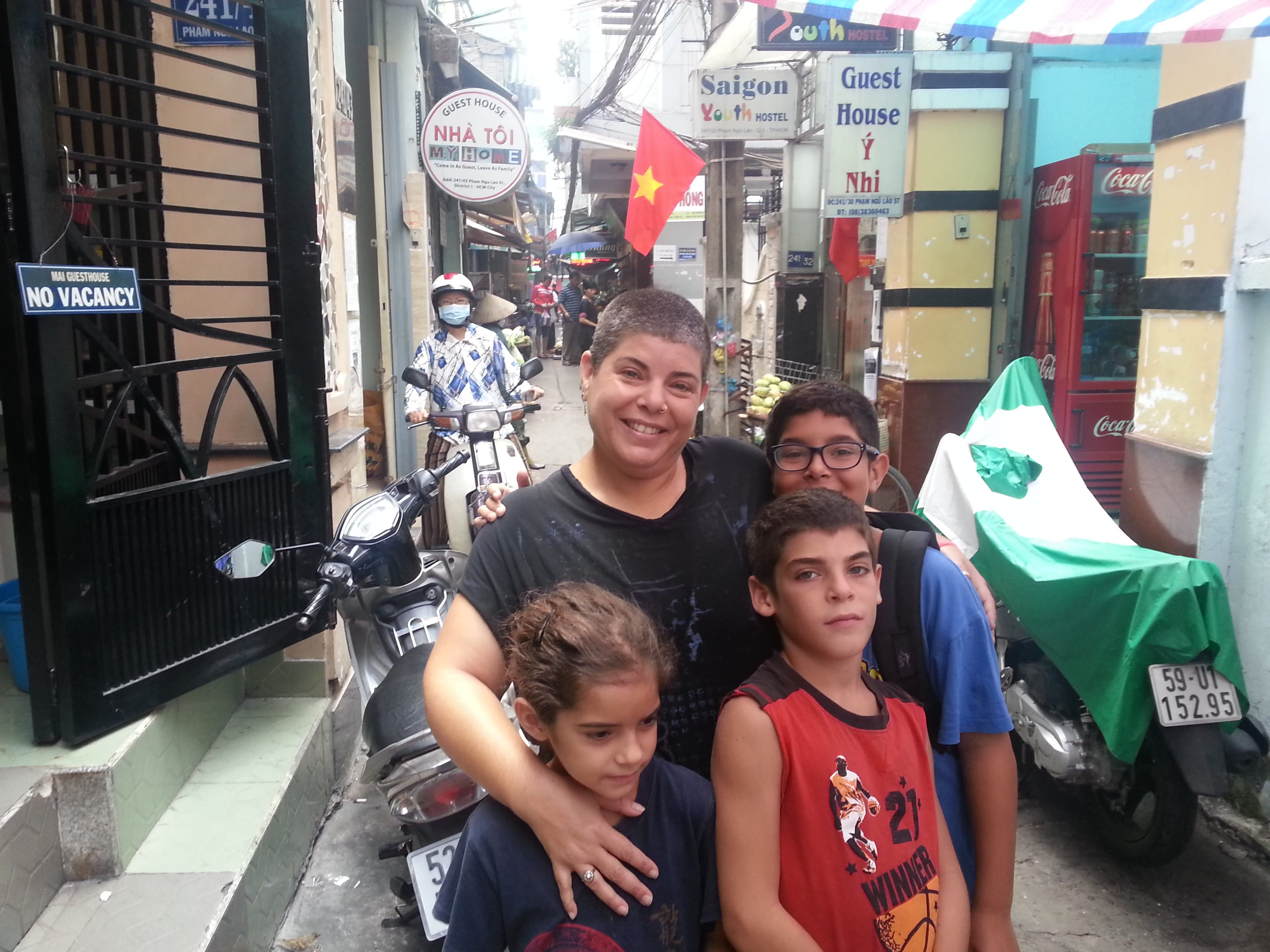It all started almost twenty years ago. He returned from a trip in Sinai, Egypt. We were both students. We worked in students job. He was sitting with his back to me and I was sitting with my back to him. “Half-a-circle” as we used to say in kindergarten.
I took a break and for a second I caught a glimpse of the back of his head.
Go ahead, laugh, I fell in love with the rear of The One’s head and the rest is history.
And ever since I follow his back wherever he goes and travel abroad only with The One-Tours. They never fail. An awesome agency.
But sometimes I argue.
For example, when we’ve been to Hanoi and Halong Bay and it was cold and even rained and I was really turned off with the weather, and I had to walk all over the market in Cat Ba Island to equip The Natives with something warm to wear. I explained to The One – you have to understand, I’m a mother, if my kids are cold it hurts all over my body, it depresses me, I can’t cope with that. It’s up north. It’s remote. It will probably be cold. The forecast here is unreliable. We’ll have no means to escape from there since it is so far away. Why should we go now to this remote province near the Vietnam-China border?? Let’s go to Sapa where everyone goes. We’ll see rice terraces. We’ll do a big wow and that’s it.
But the weather forecast in the internet insisted that it’s warm and shiny in Ha Giang and we decided – we’re going.
The One: “Ha Giang is a mountainous province in the north of Vietnam near the border with China. This area had in the past some incidents between the two nations and the outcome was that to this day tourists are required to obtain a special permit to tour the region.
Exploring in the internet and specifically an article in New York Times unveiled to us the existence of Ha Giang, a place that is totally off the beaten path in Vietnam and with hardly any written material available in the internet. After a small research I found out that several days trip packages can be booked in Hanoi, same as with Halong Bay and Sapa, but then the prices get extremely expensive and may reach hundreds and thousands of dollars. Another option is doing it independently and that is exactly what we’ve done.
We set contact with a place called Truong Xuan Resort run by a nice person called Thien with excellent English and loads of good will. Thien helped us build the trip.
The first night we started by sleeping in the resort itself. We arrived in Ha Giang by a local bus from My Dinh station in Hanoi. It is a 7 hours ride on a beautiful and not too bumpy road. Once arrived in Ha Giang we were picked up by the resort’s shuttle car as it seems to be located a few kilometers away from the station.
The next day came the car driver who accompanied us during the next 3 days and although didn’t speak a word of English was very kind and patient, offered nice places for stops and photos, never rushed us and was generally charming. Thien who organized it all in advance including the travel permits stayed in touch with us all along and things went by smoothly. All that for a price of 280$ for all of us for 3 days including a private driver, permits and driver accommodations. It didn’t include the price of the guesthouses we stayed in along the way organized by Thien.”
Did I say smooth? It was perfect.
After experiencing the touristic attractions of Vietnam where all is wrapped within a shiny touristic package served in the room temperature (did anyone say Sapa??). Here it’s the real thing.
The women of the hill tribes do not wear anything special for the rare tourists that wonder around in this remote place. Sellers to do not hassle you in every corner and everything is just – sorry for the cliché but well – authentic, absolutely authentic.
Breathtaking views, roads meandering between mountains and rocks, rice paddies and a sneak peek into the life in a tribal society, that although have electricity and satellite plates outside their wooden or mud huts, would still wash their clothes in the river, plow with and ox or a water buffalo, walk long long distances by foot and raise children in a full or partial tribal manner. Some villages have schools (we visited one of them) and the children are separated from their parents during study time and are under the responsibility of their teachers, while in others it was clearly noticeable that the children work together with their parents in the rice paddies, by the river and sometimes collecting all sorts of things carrying them on their backs, taking care of babies and more.
I of course was mainly fascinated by observing the baby care among the mountain tribes. Well, obviously they are being breastfed and anywhere you look you would see babies being body carried in a traditional Vietnamese carrier, a colorful cloth carrier in which the baby is carried on the front and also on the back. Parents, grandparents, brothers and sisters carry babies and it is very common to see for instance a girl (or a boy) looking no more than seven years old carries a couple of months old baby on her back.
When I got near to one of the mothers who carried a baby on her back and asked with hand gestures to take a photo together I couldn’t help noticing that her baby who is about six months old lies peacefully on his mother’s back without any diaper, totally naked in the lower part of his body. Then I realized, OF COURSE, they raise they kids without any diapers. When baby wishes to poo or pee, mommy feels it in her body that is actually in constant attention to the baby’s body. She intuitively let him off the carrier and releases him to fulfill his natural needs. He will remain carried over her body or any other body around free for a lift until he starts walking and also then he will remain naked in the lower body until totally independent with his droppings. I saw by the side of the road an about two years old girl spread her legs and pee joyfully without even moving aside from the other kids and adults around her. I assume (and hope) that for number two they would find some hidden corner, I didn’t have the chance to witness it yet…
And while talking about poo, the food issue was really horrible during the three days we spent in this remote region. After one local meal I managed to convince the entire pack to join me and Little One and get opportunistically vegetarians since what the locals serve here as meat is OMG. And so it happened that we miserably spent three days of imposed vegetarianism after discovering the tolerable formula – white rice, and the use of google translator to say “vegetarian” in Vietnamese, which will bring to our table tofu and some cooked vegetable, soy sauce and if we’re lucky enough some soup to pour over. A culinary peak.
The forecast was right by the way. It was warm and sunny.
And I, by the way, was wrong and will never again argue with The One who insisted on taking us to this remote region and thanks to him we had this unlike anything we’ve done before experience and for me was, at least until this point in time, one of the highlights of our journey.
Ha Giang province
Our trip to Ha Giang province lasted 3 days/2nights. We started it from Ha Giang City. Accommodation options are quite limited and we preferred to break our budget frame a little bit and find a reasonably looking hotel with an English speaking staff that can help us plan our trip. The price of one night stay including breakfast is 36$.
Ha Giang is the house for several ethnical minorities whose origin is the surrounding countries (China, Laos, Thailand) and the main tribe is the Hmong people that in some time during history even had some sort of autonomy in the region.
The first stop of our trip was a place called Heaven’s Gate. In the place we found a great point to a stunning view of the giant limestone rocks that can be seen all around the region. One of the more remarkable is a pair of amazingly symmetrical hills named The Fairy Bossom for obvious reasons.
Luckily we started the trip on Sunday when the colorful and interesting markets take place in all the villages in the region. We visited the market of Quan Ba. It has all the kinds of goods that are typical to this area (and that repeated over and over again in all the next villages we visited) – fruits, chickens, giant pots and pans and… yep – also dogs for eating. Local villagers get in from all around in traditional clothes and are of course very curious to see strangers especially with kids, who are not to be seen often as in other places in Vietnam.
All along the road in spite of the unbelievable scenery it is possible to get a nice impression from the local farming that remained almost untouched for hundreds of years: plowing with buffalos, planting by hands with a hunched back, reaping with a sickle. It is possible to stop in one of the villages along the way and watch a traditional weaving and cloth painting. It’s a little bit of a show for tourists but still very interesting, especially for the kids.
Another stop is in the old palace of the Hmong king. Do not expect Buckingham Palace. A short 30 minutes tour in the rooms of the palace is a small lesson in a king’s modesty. The entrance fee is 1$ per adult.
![20150315_163412[1]](http://www.wetooktheredpill.com/wp-content/uploads/2015/03/20150315_1634121-1024x768.jpg)
Dong Van
This was the first town where we stayed for a night. The sleeping and eating options for tourists around are quite limited. We stayed in a very moderate hotel for 20$ a night for a family room. Restaurants or more accurately – eateries – are abundant, but they are all look clones of each other and serve copies of the same local menu – Pho (noodle soup), Com (fried rice), Mi (fried noodles).
The next day we had a short 1.5 hours morning trip and climbed up to a colonialist era French fortress overlooking Dong Van valley.
Meo Vac
The road from Dong Van to Meo Vac is beautiful and some would say the most beautiful road in Vietnam. The view invites frequent stops for photo shooting. The road itself is paved only theoretically. Many parts are in poor quality, it’s very curvy and the driving speed is very slow.
Not too far away from Dong Van there is a nice stop and a viewpoint to an impressive mountain pass called Ma Pi Leng.
Meo Vac in itself is quite a poor town. Surprisingly, the hotel we stayed in was not bad at all as it usually accommodates government officials, military officers and journalists. We paid 25$ a night for a family room.
On the third and last day we returned to Ha Giang City. The ride itself was mostly along a river with hanged bridges and again – stunning views.

